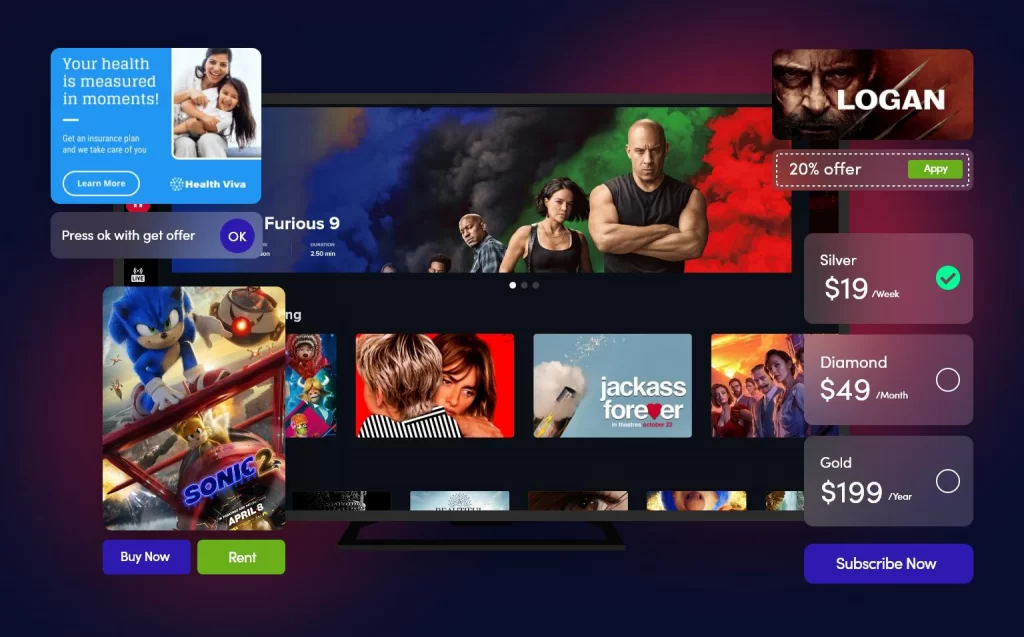Some Ideas on Apollo Group Tv You Need To Know
Some Ideas on Apollo Group Tv You Need To Know
Blog Article
All About Apollo Group Tv
Table of ContentsHow Apollo Group Tv can Save You Time, Stress, and Money.Apollo Group Tv Things To Know Before You Get ThisThe Buzz on Apollo Group TvApollo Group Tv Fundamentals Explained
In this circumstance, rather than having three-minute business places during a 30-minute television program, television programming might transform to one where a customer will certainly be called for to have a regular monthly membership, to make sure that they cen view targeted banner ads. This sort of advertising and marketing already happens on the net, and the quantity of information television companies gather permits them to do similar.Explain the major fads amongst the broadcasting and wire networks. Popular radio shows such as police dramatization Dragnet and western cowboy collection Gunsmoke were adapted for tv, and brand-new Television shows were sponsored by single advertisers, just as radio programs had been.
Today, the television industry is much a lot more complex. Programs are funded by several advertisers; shows is regulated by major media conglomerates; and the three significant networks no longer control the airwaves yet rather share their audiences with numerous cable television networks. Several factors make up these patterns within the market, consisting of technical developments, federal government policies, and the production of brand-new networks.

Some Ideas on Apollo Group Tv You Need To Know
Even public tv has actually become based on the impact of marketing. Developed in 1969, (PBS) established out of a report by the Carnegie Commission on Educational Tv, which analyzed the role of instructional, noncommercial television on culture. The report advised that the government financing public television in order to supply diversity of shows throughout the network eraa service produced "not to market items" however to "enhance citizenship and civil service (McCauley, 2003)." Public television was also planned to offer global access to tv for visitors in country areas or customers who might not manage to pay for private television solutions.
The duration in between 1950 and 1970 is historically acknowledged as the. Besides a tiny portion of airtime controlled by public tv, the 3 major networks (understood as the Big 3) controlled the tv industry, collectively representing greater than 95 percent of prime-time watching. In 1986, Rupert Murdoch, the head of international firm News Corp, introduced the Fox network, challenging the prominence of the Big 3.
Targeting young and minority target markets with programs such as Buffy the Vampire Killer, Moesha, Dawson's Creek, and The Wayans Bros., the new networks really hoped to attract terminals away from their old network affiliations. However, instead of duplicating the success of Fox, UPN and WB battled to make an effect. Not able to draw in lots of associate stations, both new networks got to less households than their larger opponents because they were unobtainable in some smaller cities.
This choice paved the way for the development of cable movie channels, adding to the exponential development of cable in the 1980s and 1990s. apollo tv group. More deregulation of wire in the 1984 Wire Communications Policy Act eliminated restrictions on cable prices, making it possible for drivers to charge what they wanted for cable services as long as there worked competitors to the service (a criterion that over 90 percent of all wire markets might meet)
The Basic Principles Of Apollo Group Tv

Having created the first "superstation," Turner broadened his realm by starting 24-hour information network CNN in 1980. At the end of the year, 28 read the full info here national programming services were offered, and the cable revolution had begun. Over the following decade, the market went through a duration of fast development and appeal, and by 1994 customers can pick from 94 standard and 20 costs wire services.
Number 9 - https://giphy.com/channel/apollogtv01.16 Raised competitors from cable television networks has created a constant decline in the networks' target market rankings. Throughout the 1950s, the expense of producing a solitary tv show increased as programs became much longer and manufacturing costs rose. Sponsorship on network tv changed from solitary sponsorship, in which a program was completely sustained and generated by one marketer, to multiple sponsorship, in which advertisers purchased 1- or 2-minute areas on the program
Select one of the Big 4 networks and publish out its once a week programs routine. View the network's prime-time programs over the course of a week, noting the target group for each show.
The Best Strategy To Use For Apollo Group Tv

Straight TV, commonly described as conventional broadcast TV, includes cord and satellite television. It's called "straight" since content follows an established programs timetable, unlike on-demand material which the individual audience chooses to view based upon their own preferences and routine. When you ask, "What is linear TV?", consider it as the classic way of watching television that has actually been around for decades.
Report this page